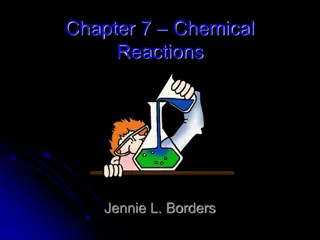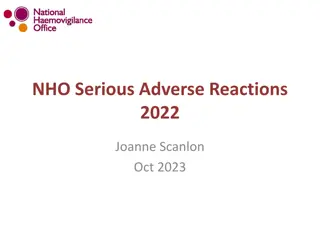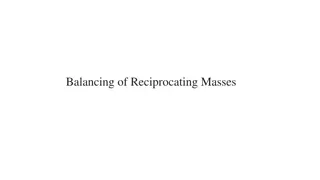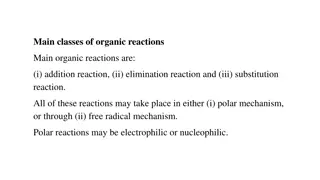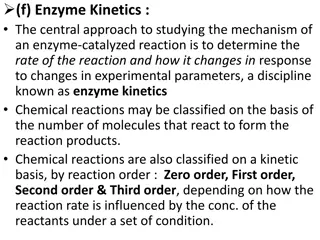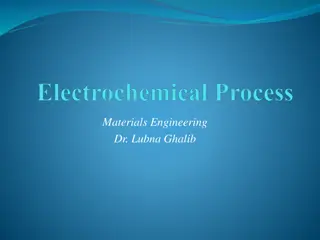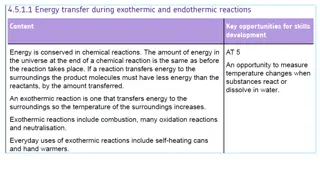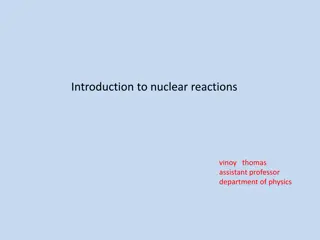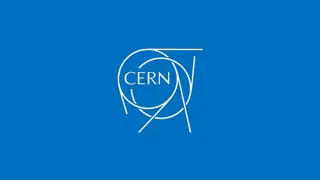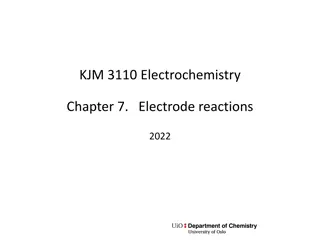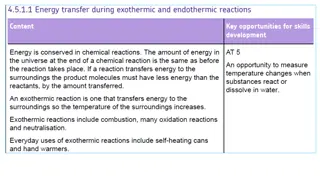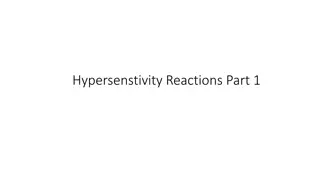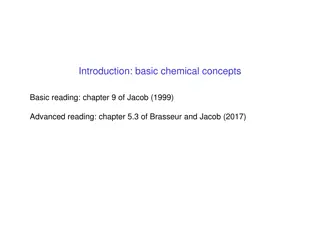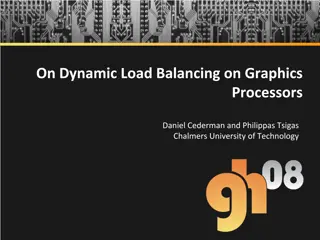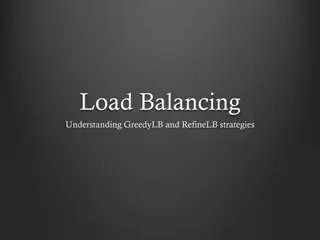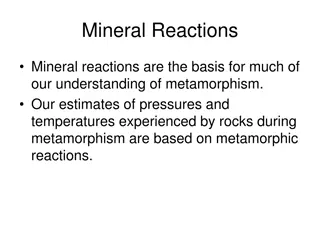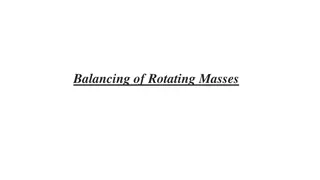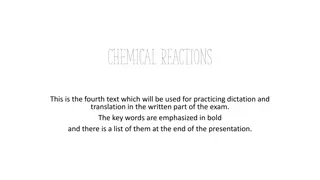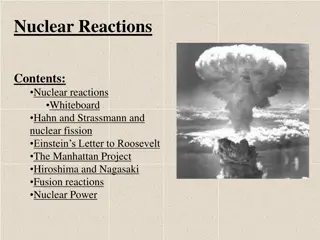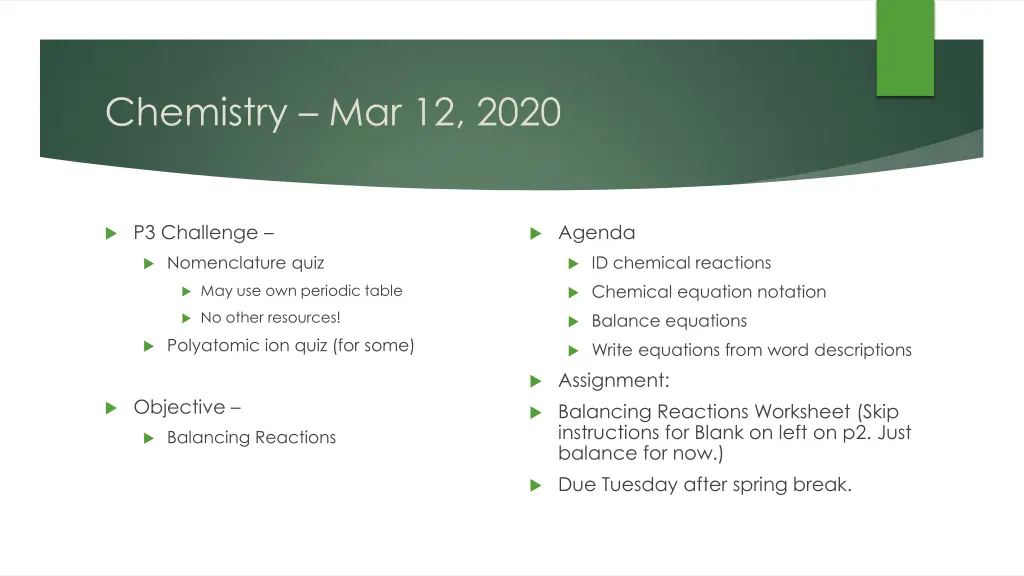
Chemical Equations and Balancing Reactions in Chemistry
Learn about chemical reactions through the symbolic representation of chemical equations, understand the importance of balancing equations to satisfy the law of conservation of mass, and explore strategies for balancing reactions effectively.
Download Presentation

Please find below an Image/Link to download the presentation.
The content on the website is provided AS IS for your information and personal use only. It may not be sold, licensed, or shared on other websites without obtaining consent from the author. If you encounter any issues during the download, it is possible that the publisher has removed the file from their server.
You are allowed to download the files provided on this website for personal or commercial use, subject to the condition that they are used lawfully. All files are the property of their respective owners.
The content on the website is provided AS IS for your information and personal use only. It may not be sold, licensed, or shared on other websites without obtaining consent from the author.
E N D
Presentation Transcript
Chemistry Mar 12, 2020 P3 Challenge Agenda Nomenclature quiz ID chemical reactions Chemical equation notation May use own periodic table No other resources! Balance equations Polyatomic ion quiz (for some) Write equations from word descriptions Assignment: Objective Balancing Reactions Worksheet (Skip instructions for Blank on left on p2. Just balance for now.) Balancing Reactions Due Tuesday after spring break.
Evidence of a possible chemical reaction (review) Color change (ex: rust formation) Formation of a solid (ex: hard water deposits) Formation of a gas (ex: Alka Seltzer) Emission of light (ex: fireworks) Spontaneous exchange of heat (heats up or cools down) (ex: hot/cold packs) These observations usually indicate a chemical change Phase changes also involve the formation of a solid or a gas, usually only due to heat addition/subtraction, not mixing another substance
Chemical Equations Chemical reactions are represented symbolically using chemical equations Ex: 2 C2H6 (g) + 7 O2(g) 4 CO2(g) + 6 H2O (g) The substances mixed together are called reactants. Their chemical formulas are listed with a + sign between them. Then an arrow represents the process of reacting. Any additional information about the reaction process may be written above or below the arrow. (Heat, light, catalyst ) The substances produced from the reaction are called products. Their formulas are listed with a + sign between them. Often, the state of each substance is stated in parentheses. (s, l, g, aq) optional Large numbers in front of each formula are called coefficients and are necessary to balance the equation.
Balancing Chemical Equations Because of the law of conservation of mass, the same number and types of atoms must be present on both sides of a chemical equation. Atoms are neither created nor destroyed in a chemical reaction but only reorganized. Balance an equation by adding coefficients in front of chemical formulas as needed. DO NOT ADD OR CHANGE FORMULA SUBSCRIPTS! (Verify all formulas are correct before balancing.)
Balancing Chemical Equations How to balance: 1. Make an inventory of the number and type of each type of element on each side of the equation. 2. Balance one element. Update the inventory. 3. Repeat for each element until all elements are balanced. 4. Verify each type of atom is balanced.
Some strategies and hints Avoid balancing an element that occurs in multiple compounds on one side until later. These elements often balance when other elements balance. Balance a free element last. When there is not a simple multiple of the numbers, try swapping numbers. When balancing a last diatomic element that needs an odd number of atom, double all other coefficients and then balance the diatomic.
Balancing equations Examples _____Li2O + _____H2O _____LiOH _____NH3+ _____NO _____ N2+ _____H2O _____FeCl3+ _____NH4OH _____Fe(OH)3+_____NH4Cl _____C5H12 + _____O2 _____CO2+ _____H2O
Word Equations Hint: 9 molecular elements: H2, N2, O2, F2, Cl2, Br2, I2, P4, S8 When solid sodium metal reacts with liquid water, an aqueous solution of sodium hydroxide and hydrogen gas are formed. When aqueous calcium chloride and aqueous sodium sulfate are mixed a white solid of calcium sulfate forms in an aqueous solution of sodium chloride. The reaction of aqueous silver nitrate and aqueous sodium chromate that forms solid silver chromate and aqueous sodium nitrate.
More Balancing practice _____ H2+ _____ O2 _____ Fe + _____ Cl2 _____ Cu + _____ AgNO3 _____ Zn + _____ HCl _____ Pb(NO3)2+ _____ AlCl3 _____ LiClO3 _____ LiCl + _____ O2 _____ Mg(OH)2+ _____ HCl _____ H2O _____ FeCl3 _____ Cu(NO3)2+ _____ Ag _____ ZnCl2+ _____ H2 _____ PbCl2+ _____ Al (NO3)3 _____ MgCl2+ _____ H2O
Exit Slip - Homework Exit Slip: Balance the following chemical equation: _____Fe2O3+ _____C _____CO + _____Fe What s Due? (Pending assignments to complete.) Complete the Balancing Reactions Worksheet What s Next? (How to prepare for the next day Read p263-285

